In the world of animals, there is a wide variety. Some are cute and cuddly, while others can be dangerous. When encountering dangerous animals people often imagine huge teeth and sharp claws. However, some animals possess other defensive tactics, such as poison and venom. While many people use the words poisonous and venomous interchangeably, they are not the same thing. In this article, we will uncover the difference between poison and venom and will share a list of animals that have each. This article aims to arm you with more animal knowledge on this commonly mistaken topic.
What Is the Difference Between Poison and Venom?
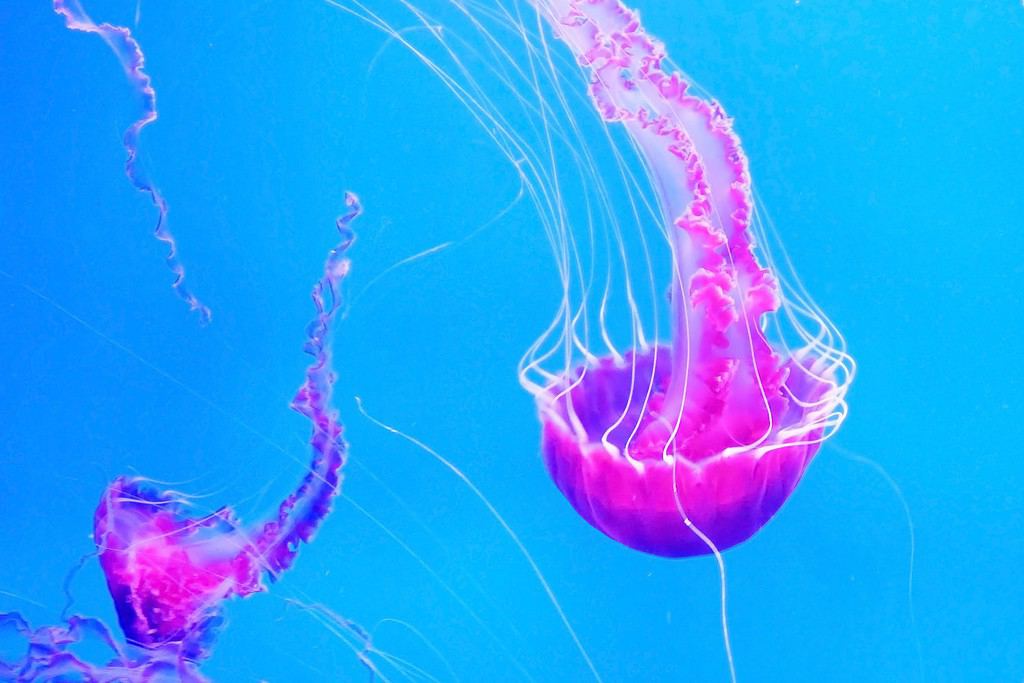
Poison is when you ingest a toxin, whereas venom is when a toxin is injected into you.
©LanKS/Shutterstock.com
Although both of these things can be harmful to you and animals can contain either of them, poison and venom are not the same thing. In a very simplified explanation, a quick way to remember the difference is how the substance comes into contact with you or your body. If you bite it and have an adverse reaction, it is poison. If it bites you and you have an adverse reaction, it is venom. Let’s look at that more closely.
The National Park Service does a great job of separating these two commonly mixed words. Poison is when you ingest a toxin. The toxin gets into your body by inhaling, swallowing, or absorption through the skin. It is less common than venom. Venom, on the other hand, is when a toxin is injected into you. Typically, this toxin enters your body through a bite or a sting. An example of how this can happen is from the fangs of a venomous snake, like a cobra.
Poisonous Animals
Here are some well-known poisonous animals as well as some that might surprise you.
Poison dart frog (Dendrobatidae family)
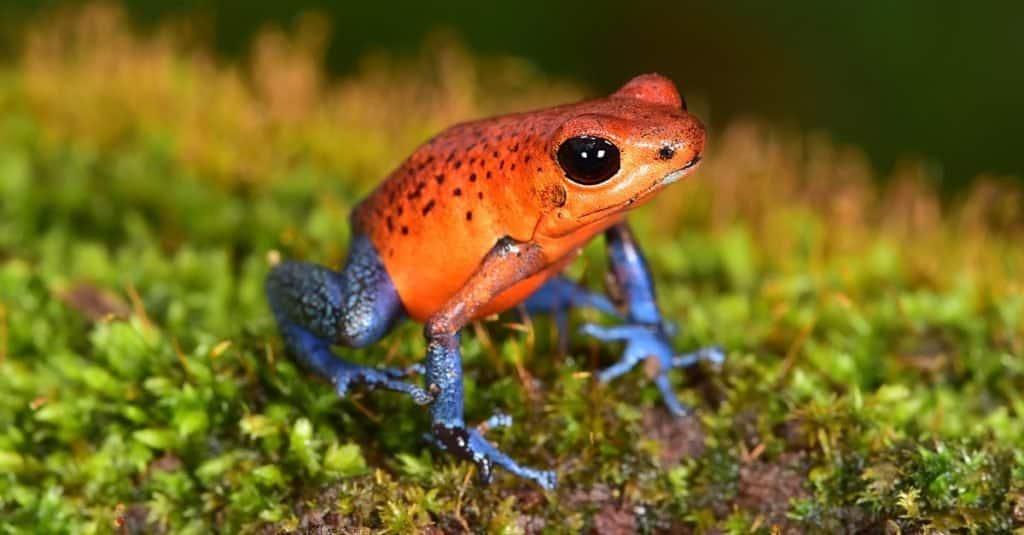
Although they only weigh about 0.3 ounces, poison dart frogs are equipped with deadly toxins.
©worldswildlifewonders/Shutterstock.com
A well-known poisonous animal is the poison dart frog. These amphibians live in tropical jungles and wet forests of Central and South America. They come in varying shades of vibrant colors. However, stunning color is not their only feature. Despite only weighing about 0.3 ounces, these frogs carry deadly toxins. They derive the poison from the food they eat, including mites, centipedes, and ants. They store the poison in their skin and release it against any predator that tries to consume the frog.
Hooded pitohui (Pitohui dichrous)
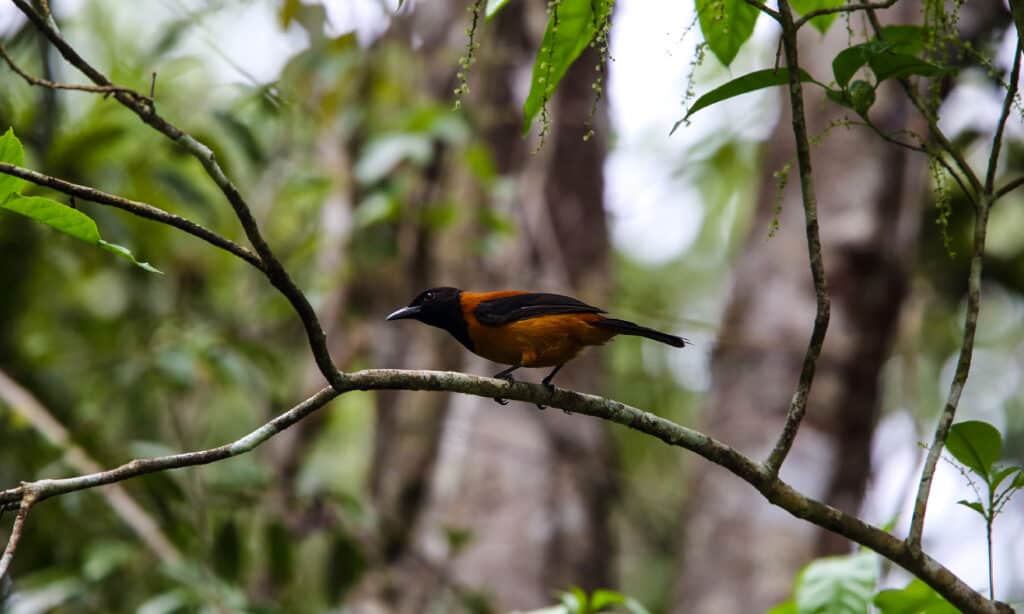
The Hooded Pitohui is the only scientifically confirmed poisonous bird in the world.
©iStock.com/feathercollector
When thinking of poisonous animals, most people do not envision birds. The hooded pitohui is one of the few poisonous birds out there. It contains a neurotoxin in its skin and feathers called homobatrachotoxin. This toxin is the same toxin found in the poison dart frog. Additionally, it is also thought to come from the bird’s diet of insects.
Keelback snake (Rhabdophis)
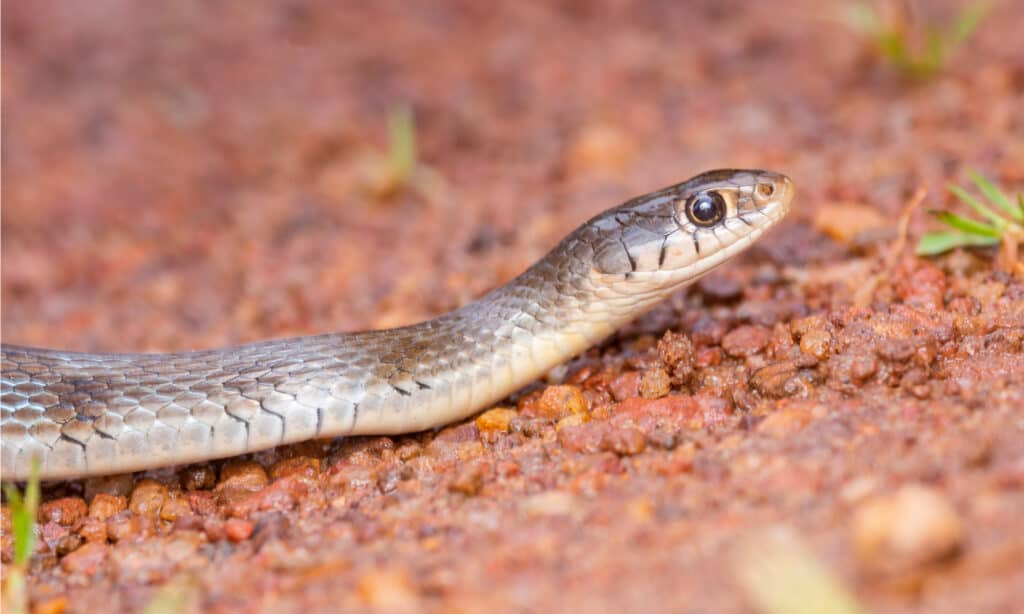
This snake is unique because although some species of it fall into the poison category, it is delivered to its victims in a venom-like modality.
©Chaithanya Krishnan/Shutterstock.com
This one may shock people as snakes usually make it onto the venomous list, not the poisonous list. This family of snakes is so huge that some of these snakes are strictly venomous, some are strictly poisonous, and some have both. Those that are poisonous obtain their poison from their diet. They consume poison toads and the toxins from the toads accumulate in their saliva glands. One thing that makes this poison animal unique is the delivery. While the toxin being delivered technically falls into the poison category, it is usually delivered to the victim through a venom-like modality, by biting its victim.
Monarch butterflies (Danaus plexippus)

Monarch butterflies acquire their poison from their diets.
©iStock.com/CathyKeifer
What, butterflies are poisonous!? Sitting in the garden just got a lot more deadly. Monarch butterflies also acquire their poison from their diet. When in their larval stage they consume milkweed. Milkweed produces cardiac glycosides which disrupt cell functioning. While it may have some health benefits, if too much is consumed it can cause death.
Black sea cucumber (Holothuria leucospilota)

The black sea cucumber is the only poisonous species of sea cucumber.
©Diego Delso, CC BY-SA 4.0 – License
This seemingly harmless creature has a deadly defense. The black sea cucumber is the only poisonous species of sea cucumber. They release a sticky white, thread-like secretion when attacked by a predator. This toxin is called holothurin and it can cause red blood cells to rupture. If ingested in high amounts, this toxin can cause death to humans.
More Poisonous Animals You May Not Know About
- Cane toad (Rhinella marina)
- Pfeffer’s flamboyant cuttlefish (Metasepia pfefferi)
- Comb stars (Astropecten polyacanthus)
- Rough-skinned newt (Taricha granulosa)
- Pufferfish ( Tetraodon lineatus)
- Blister beetles (Meloidae family)
- Hawksbill sea turtle (Eretmochelys imbricata)
- Striated surgeonfish (Ctenochaetus striatus)
- Spanish fly (Lytta vesicatoria)
- Greenland shark (Somniosus microcephalus)
Venomous Animals
Here are some well-known venomous animals as well as some that might surprise you.
Funnel-Web Spider (Atrcidae family)

Bites from male spiders can incapacitate victims and can even be fatal.
©James van den Broek/Shutterstock.com
This spider ranks among the most venomous arachnids in the world. While bites from female spiders are harmless, bites from male spiders can incapacitate victims and even be fatal. This venomous spider stores their venom in their fangs. When threatened, they will stand up on their hind legs and flash their fangs before they bite. A bite from this spider can be excruciating and symptoms will typically appear within an hour of being bitten.
Box Jellyfish (class Cubozoa)
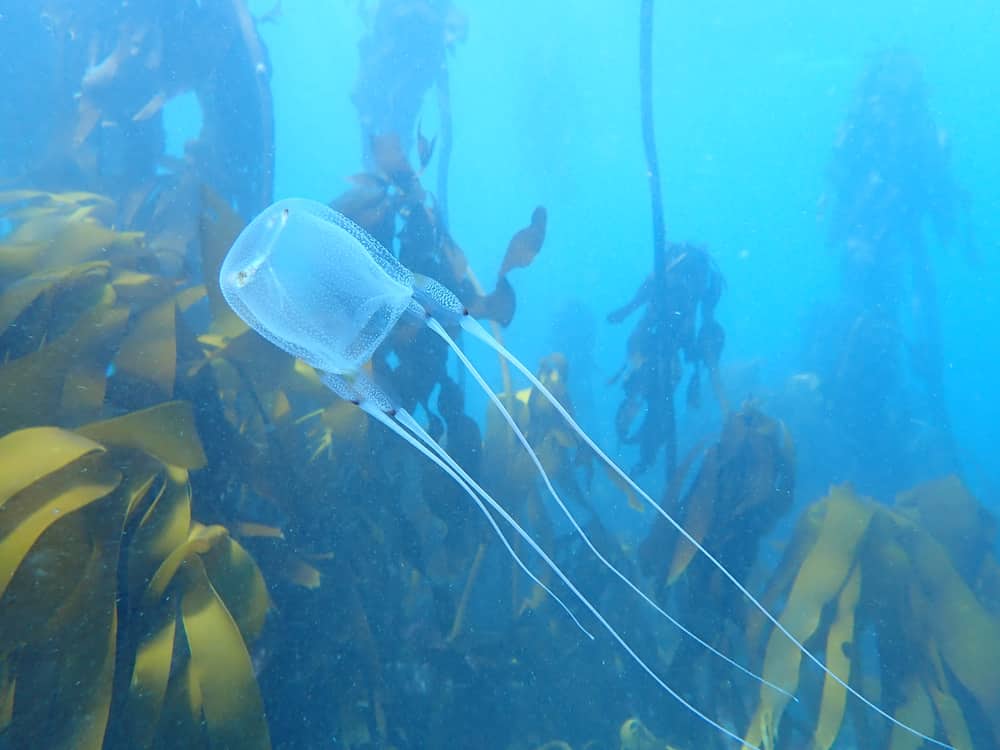
Once stung by a
Box Jellyfish
, death can occur in minutes.
©Katherine Wallis/Shutterstock.com
The Box Jellyfish is a very venomous animal. These jellyfish have tentacles that are covered in nematocysts, or tiny darts loaded with poison. If you are injected with this poison it can lead to paralysis, cardiac arrest, and death within minutes. These jellyfish are seen as the most venomous marine animal.
Indian Red Scorpion ( Hottentotta tamulus)
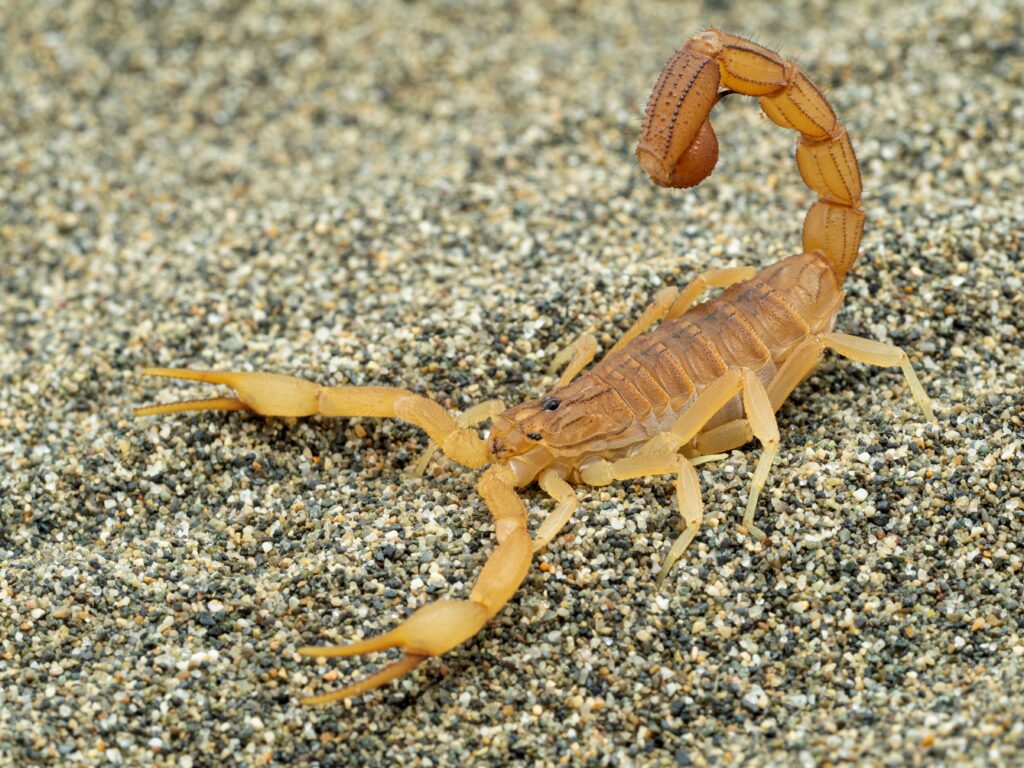
Scorpions store their venom in their tails.
©Ernie Cooper/Shutterstock.com
Unfortunately, children are most affected by this deadly sting. Without treatment, a sting from this scorpion is often fatal. Indian red scorpions lie in wait for their prey. When prey or danger passes they grab with their pinchers and then sting with their tail. They store their venom in their tail. Once the venom is injected, it liquefies the prey’s insides. In humans, the venom affects nerves and muscles. It causes an increase in the release of neurotransmitters, which can cause cardiovascular abnormalities and respiratory paralysis.
Cone snail (Conidae family)
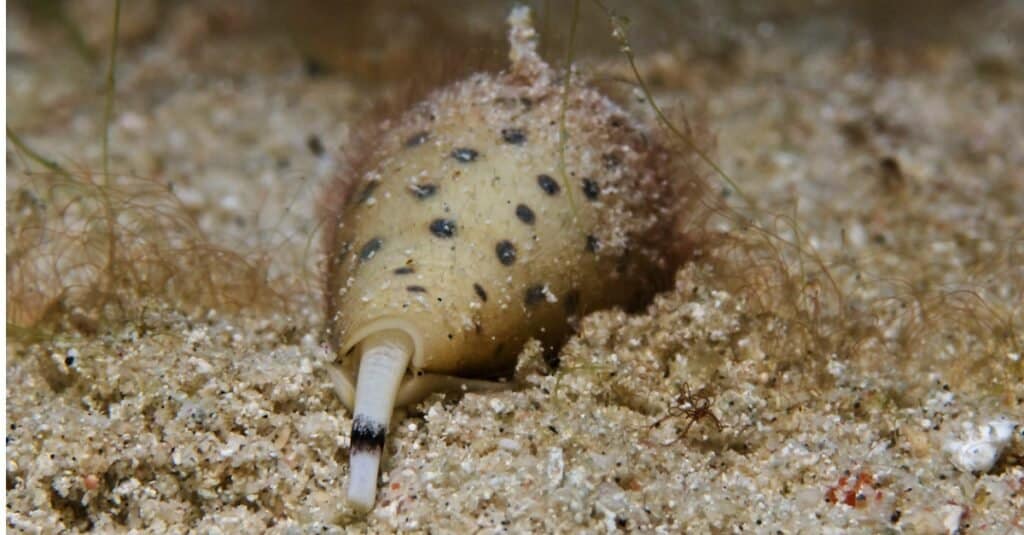
Cone snails use their radula tooth as a harpoon to shoot venom into their prey.
©iStock.com/scubaluna
While smaller cone snails are not a threat to humans, larger cone snails are. They store their venom in their radula tooth, which is loaded with venom from the venom bulb. They use this tooth as a harpoon to shoot venom into their prey. Their venom can paralyze smaller fish immediately. With humans, it can affect the nervous system and is capable of causing paralysis, leading to respiratory failure and even death.
Platypus (Ornithorhychus anatinus)

The
platypus
makes their venom in venom glands that are connected to spurs on their hind legs.
©Lukas_Vejrik/Shutterstock.com
When thinking of a platypus, venom is not the thing that comes to most peoples’ minds. The platypus is the most venomous mammal to humans. Their venom is made in venom glands connected to spurs on their hind legs. While it can kill smaller mammals such as cats and dogs, contact with this venom is not likely to kill a human. However, it can cause temporary incapacitation and long-term pain sensitivity. Unlike other venomous creatures, the platypus mainly uses their venom for defensive purposes rather than for disabling or killing prey. Additionally, only males produce this venom.
More Venomous Animals You May Not Know About
- Saw-Scaled Viper (Echis)
- Maricopa Harvester Ant ( Pogonomyrmex maricopa)
- Inland Taipan Snake ( Oxyuranus microlepidotus)
- Stonefish (Scorpaena horrida)
- Mexican Beaded Lizard (Heloderma horridum)
- Gila monster (Heloderma suspectum)
- Slow loris (Nycticebus genus)
- Shrew (Soricidae family)
- European mole (Talpa europaea)
- Sea urchins (Echinoidea)
The photo featured at the top of this post is © dirk ercken/iStock via Getty Images
Thank you for reading! Have some feedback for us? Contact the AZ Animals editorial team.







